#tahina-can
Text

Hello everyone, today I want to present you my novel The legend of Tahina-Can 🤩 It's available on Amazon. This is a fantastic story, full of adventure and spirits of nature. The main Hero is the Star, who helps people from little tribe in jungle.
#books#art#novel#illustration#strong girls#stories#summer#literature#language#spanish#english#jungle#brazil#exotic#forest#tahina-can
1 note
·
View note
Text
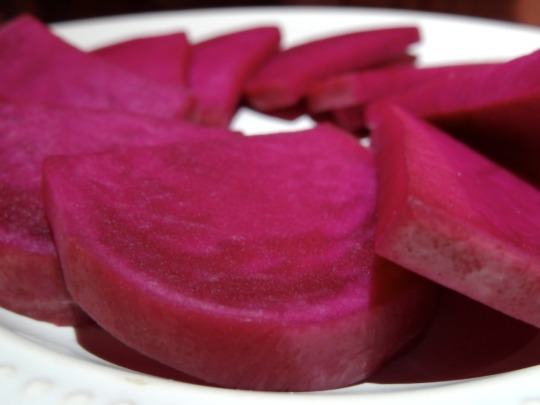
[ID: A circle of overlapping semi-circular bright pink pickles arranged on a plate, viewed from a low angle. End ID]
مخلل اللفت / Mukhallal al-lifit (Pickled turnips)
The word "مُخَلَّل" ("mukhallal") is derived from the verb "خَلَّلَ" ("khallala"), meaning "to preserve in vinegar." "Lifit" (with diacritics, Levantine pronunciation: "لِفِتْ"), "turnip," comes from the root "ل ف ت", which produces words relating to being crooked, turning aside, and twisting (such as "لَفَتَ" "lafata," "to twist, to wring"). This root was being used to produce a word meaning "turnip" ("لِفْتْ" "lift") by the 1000s AD, perhaps because turnips must be twisted or wrung out of the ground.
Pickling as a method of preserving produce so that it can be eaten out of season is of ancient origin. In the modern-day Levant, pickles (called "طَرَاشِيّ" "ṭarāshiyy"; singular "طُرْشِيّ" "ṭurshiyy") make up an important culinary category: peppers, carrot, olives, eggplant, cucumber, cabbage, cauliflower, and lemons are preserved with vinegar or brine for later consumption.
Pickled turnips are perhaps the most commonly consumed pickles in the Levant. They are traditionally prepared during the turnip harvest in the winter; in the early spring, once they have finished their slow fermentation, they may be added to appetizer spreads, served as a side with breakfast, lunch, or dinner, eaten on their own as a snack, or used to add pungency to salads, sandwiches, and wraps (such as shawarma or falafel). Tarashiyy are especially popular among Muslim Palestinians during the holy month of رَمَضَان (Ramaḍān), when they are considered a must-have on the إِفْطَار ("ʔifṭār"; fast-breaking meal) table. Pickle vendors and factories will often hire additional workers in the time leading up to Ramadan in order to keep up with increased demand.
In its simplest instantiation, mukhallal al-lifit combines turnips, beetroot (for color), water, salt, and time: a process of anaerobic lacto-fermentation produces a deep transformation in flavor and a sour, earthy, tender-crisp pickle. Some recipes instead pickle the turnips in vinegar, which produces a sharp, acidic taste. A pink dye (صِبْغَة مُخَلَّل زَهْرِي; "ṣibgha mukhallal zahri") may be added to improve the color. Palestinian recipes in particular sometimes call for garlic and green chili peppers. This recipe is for a "slow pickle" made with brine: thick slices of turnip are fermented at room temperature for about three weeks to produce a tangy, slightly bitter pickle with astringency and zest reminiscent of horseradish.
Turnips are a widely cultivated crop in Palestine, but, though they make a very popular pickle, they are seldom consumed fresh. One Palestinian dish, mostly prepared in Hebron, that does not call for their fermentation is مُحَشّي لِفِتْ ("muḥashshi lifit")—turnips that are cored, fried, and stuffed with a filling made from ground meat, rice, tomato, and sumac or tamarind. In Nablus, tahina and lemon juice may be added to the meat and rice. A similar dish exists in Jordan.
Turnips produced in the West Bank are typically planted in open fields (as opposed to in or under structures such as plastic tunnels) in November and harvested in February, making them a fall/winter crop. Because most of them are irrigated (rather than rain-fed), their yield is severely limited by the Israeli military's siphoning off of water from Palestine's natural aquifers to settlers and their farms.
Israeli military order 92, issued on August 15th, 1967 (just two months after the order by which Israel had claimed full military, legislative, executive, and judicial control of the West Bank on June 7th), placed all authority over water resources in the hands of an Israeli official. Military order 158, issued on November 19th of the same year, declared that no one could establish, own, or administer any water extraction or processing construction (such as wells, water purification plants, or rainwater collecting cisterns) without a new permit. Water infrastructure could be searched for, confiscated, or destroyed at will of the Israeli military. This order de facto forbid Palestinians from owning or constructing any new water infrastructure, since anyone could be denied a permit without reason; to date, no West Bank Palestinian has ever been granted a permit to construct a well to collect water from an aquifer.
Nearly 30 years later, the Interim Agreement on the West Bank and the Gaza Strip (also called the Oslo II Accord or the Taba Agreement), signed by Israel and the Palestine Liberation Organization (PLO) in 1995, officially granted Israel the full control over water resources in occupied Palestine that it had earlier claimed. The Argreement divided the West Bank into regions of three types—A, B, and C—with Israel given control of Area C, and the Palestinian Authority (PA) supposedly having full administrative power over Area A (about 3% of the West Bank at the time).
In fact, per article 40 of Annex 3, the PA was only allowed to administer water distribution in Area A, so long as their water usage did not exceed what had been allocated to them in the 1993 Oslo Accord, a mere 15% of the total water supply: they had no administrative control over water resources, all of which were owned and administered by Israel. This interim agreement was to be returned to in permanent status negotiations which never occurred.
The cumulative effect of these resolutions is that Palestinians have no independent access to water: they are forbidden to collect water from underground aquifers, the Jordan River, freshwater springs, or rainfall. They are, by law and by design, fully reliant on Israel's grid, which distributes water very unevenly; a 2023 report estimated that Israeli settlers (in "Israel" and in the occupied West Bank) used 3 times as much water as Palestinians. Oslo II estimations of Palestinians' water needs were set at a static number of million cubic meters (mcm), rather than an amount of water per person, and this number has been adhered to despite subsequent growth in the Palestinian population.
Palestinians who are connected to the Israeli grid may open their taps only to find them dry (for as long as a month at a time, in بَيْت لَحْم "bayt laḥm"; Bethlehem, and الخَلِيل "al-khalīl"; Hebron). Families rush to complete chores that require water the moment they discover the taps are running. Those in rural areas rely on cisterns and wells that they are forbidden to deepen; new wells and reservoirs that they build are demolished in the hundreds by the Israeli military. Water deficits must be made up by paying steep prices for additional tankards of water, both through clandestine networks and from Israel itself. As climate change makes summers hotter and longer, the crisis worsens.
By contrast, Israeli settlers use water at will. Israel, as the sole authority over water resources, has the power to transfer water between aquifers; in practice, it uses this authority to divert water from the Jordan River basin, subterranean aquifers, and بُحَيْرَة طَبَرِيَّا ("buḥayrat ṭabariyyā"; Lake Tiberias) into its national water carrier (built in 1964), and from there to other regions, including the Negev Desert (south of the West Bank) and settlements within the West Bank.
Whenever Israel annexes new land, settlers there are rapidly given access to water; the PA, however, is forbidden to transport water from one area of the West Bank to another. Israel's control over water resources is an important part of the settler colonial project, as access to water greatly influences the desirability of land and the expected profit to be gained through its agricultural exports.
The result of the diversion of water is to increase the salinity of the Eastern Aquifer (in the West Bank, on the east bank of the Jordan River) and the remainder of the Jordan that flows into the West Bank, reducing the water's suitability for drinking and irrigation; in addition, natural springs and wells in Palestine have run dry. In this environment, water for drinking and watering crops and livestock is given priority, and many Palestinians struggle to access enough water to shower or wash clothing regularly. In extreme circumstances, crops may be left for dead, as Palestinian farmers instead seek out jobs tending Israeli fields.
Some areas in Palestine are worse off in this regard than others. Though water can be produced more easily in the قَلْقِيلية (Qalqilya), طُولْكَرْم (Tulkarm) and أَرِيحَا ("ʔarīḥā"; Jericho) Districts than in others, the PA is not permitted to transfer water from these areas to areas where water is scarcer, such as the Bethlehem and Al-Khalil Districts. In Al-Khalil, where almost a third of Palestinian acreage devoted to turnips is located [1], and where farming families such as the Jabars cultivate them for market, water usage averaged just 51 liters per person per day in 2020—compare this to the West Bank Palestinian average of 82.4 liters, the WHO recommended daily minimum of 100 liters, and the Israeli average of 247 liters per person per day.
As Israeli settlement גִּבְעַת חַרְסִינָה (Givat Harsina) encroached on Al-Khalil in 2001, with a subdivision being built over the bulldozed Jabar orchard, the Jabars reported settlers breaking their windows, destroying their garden, throwing rocks, and holding rallies on the road leading to their house. In 2010, with the growth of the קִרְיַת־אַרְבַּע (Kiryat Arba) settlement (officially the parent settlement of Givat Harsina), the Jabars' entire irrigation system was repeatedly torn out, with the justification that they were stealing water from the Israeli water authority; the destruction continued into 2014. Efforts at connecting and expanding Israeli settlements in the Bethlehem area continue to this day.
Thus we can see that water deprivation is one tool among many used to drive Palestinians from their land; and that it is connected to a strategy of rendering agriculture impossible or unprofitable for them, forcing them into a state of dependence on the Israeli economy.
Turnips, as well as cabbage and chili peppers, are also grown in the village of وَادِي فُوقِين (Wadi Fuqin), west of Bethlehem. In 2014, Israel annexed about 1,250 acres of land in Wadi Fuqin, or a third of the village's land, "effectively [ruling] out development of the village and its use of this land for agriculture." Most of this land lies immediately to the west of a group of settlements Israel calls גּוּשׁ עֶצְיוֹן ("Gush Etzion"; Etzion Bloc). Building here would link several non-contiguous Israeli settlements with each other and with القدس (Al-Quds; "Jerusalem"), hemming Palestinians of the region in on all sides (many main roads through Israeli settlements cannot be used by anyone with a Palestinian ID). [2] PLO executive committee member Hanan Ashrawi said that the annexation, which was carried out "[u]nder the cover of [Israel's] latest campaign of aggression in Gaza," "represent[ed] Israel’s deliberate intent to wipe out any Palestinian presence on the land".
This, of course, was not the beginning of this strategy: untreated sewage from Gush Etzion settlements had been contaminating crops, springs, and groundwater in Wadi Fuqin since 2006, which also saw nearly 100 acres of Palestinian land annexed to allow for expansion of the Etzion Bloc.
All of this has obviously had an effect on Palestinian agriculture. A 1945–6 British survey of vegetable production in Palestine found that 992 dunums were devoted to Arab turnip production (954 irrigated and 38 rain-fed; no turnip production was attributed to Jewish settlers). A March 1948 UN report claimed that "[i]n most districts the markets are well-supplied with all the common winter vegetables—cabbages, cauliflowers, lettuce and spinach; carrots, turnips and and beets; beans and peas; green onions, eggplants, marrows and tomatoes." By 2009, however, the area given to turnips in Palestine had fallen to 918 dunums. Of these, 864 dunums were irrigated and 54 rain-fed. This represents an increase in unirrigated turnips (5.8%, up from 3.9%) that is perhaps related to difficulty in obtaining sufficient water.
Meanwhile, Israel profits from its restriction of Palestinian agriculture; it is the largest exporter of turnips in West Asia (I found no data for turnip exports from Palestine after 1922, suggesting that the produce is all for local consumption).
The pattern that Ashrawi called out in 2014 continued in 2023, as Israel's genocide in Gaza occurs alongside the continued and escalating killing and expulsion of West Bank Palestinians. The 2014 annexations, which represented the largest land grab for over 30 years and which appeared to institute a new era of state policy, have been followed up in subsequent years with more land claims and settlement-building.
Israeli military and settler raids and massacres in the West Bank, which had already killed 248 in 2023 before the حَمَاس (Hamas) October 7 offensive had taken place, accelerated after the attack, with forced expulsions of Palestinians (including Bedouin Arabs), and harassment, raids, kidnappings, and torture of Palestinians by a military armed with rifles, tanks, and drones. This violence has been opposed by armed resistance groups, who defend refugee camps from military raids with strategies including the use of improvised explosives.
Support Palestinian resistance by buying an e-sim for distribution in Gaza; donating to help two Gazans receive medical care; or donating to help a family leave Gaza.
[1] 918 dunums were devoted to turnips according to the Palestinian Central Bureau of Statistics (PCBS) report for 2009; the 2008 PCBS report attributes 253 dunums of turnip cultivation to Al-Khalil ("Hebron") for 2006–7.
[2] Today, Gush Etzion is connected to Al-Quds by an underground road that runs beneath the Palestinian Christian town of بَيتْ جَالَا (Bayt Jala).
Ingredients:
Makes 2 1-liter mason jars.
500g (4 medium) turnips
1 beetroot
1 medium green chili pepper (فلفل حار خضرة), halved
2 small cloves garlic, peeled
1 liter (4 cups) distilled or filtered water
25g coarse sea salt (or substitute an equivalent weight of any salt without iodine)
Some brining recipes for lifit call for the addition of a spoonful of sugar. This will increase the activity of lactic-acid-producing bacteria at the beginning of the fermentation, producing a quicker fermentation and a different, sourer flavor profile.
Instructions:
1. Clean two large mason jars thoroughly in hot water (there is no need to sterilize them).
2. Scrub vegetables thoroughly. Cut the top (root) and bottom off of each turnip. Cut each turnip in half (from root end to bottom), and then in 1 cm (1/2") slices (perpendicular to the last cut). Prepare the beetroot the same way.
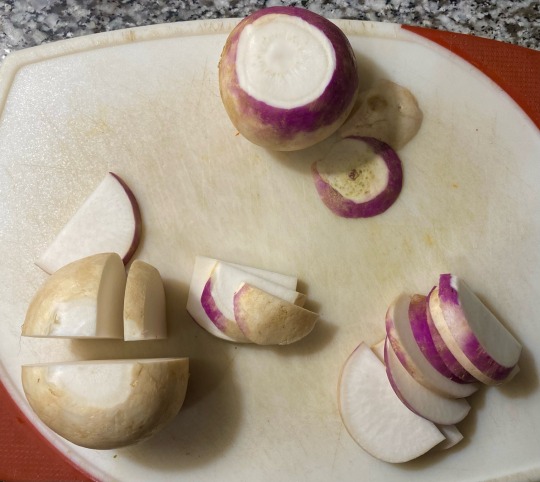
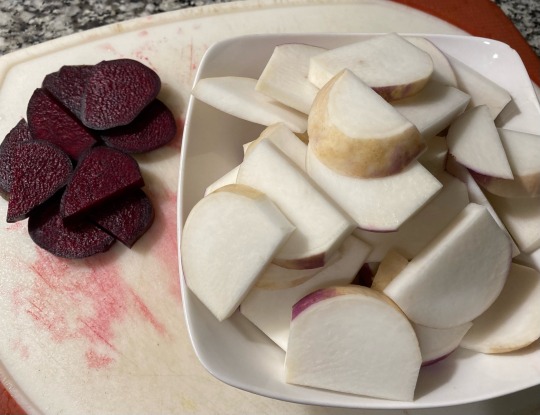
If you need your pickles to be finished sooner, cut the turnips into thinner slices, or into thick (1/2") baton shapes; these will need to be fermented for about a week.
3. Arrange turnip and beet slices so that they lie flat in your jars. Add garlic and peppers.
4. Whisk salt into water until dissolved and pour over the turnips until they are fully submerged. Seal with the jar's lid and leave in a cool place, or the refrigerator, for 20–24 days.

The amount of brine that you will need to cover the top of the vegetables will depend on the shape of your jar. If you add more water, make sure that you add more salt in the same ratio.

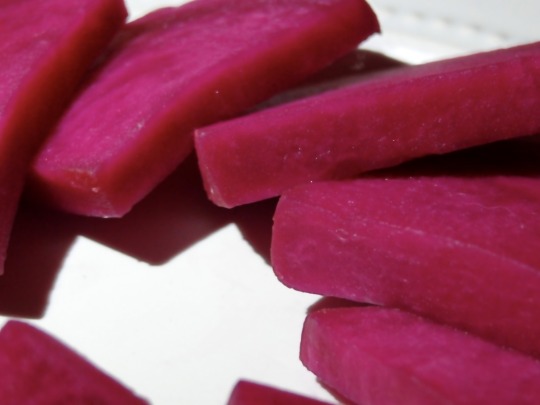
289 notes
·
View notes
Note
Outside of performance art, what's your favourite way to cook brussels sprouts? i really only know the way of roasting in oil with garlic and seasonings and i need to expand my horizons. i'm definitely going to try anon's suggestion of quick frying with soy sauce.
bless you for dignifying my cringe roleplaying with the title “performance art.”
I wouldn’t say I usually do much more than what you describe. for a simple preparation, especially if they’re the main green of the meal and everything else is very starchy, cheesy, &c. (like th*nksgiving), I’ll just halve them, toss them in salt, black pepper, ras el hanout or seb3a baharat, and olive oil, place cut-side-down on a baking sheet, and bake at 450 F for about 30 minutes until the sprouts are tender and outer leaves are crisp;
meanwhile prepare a balsamic reduction by cooking down some balsamic vinegar with a little bit of sugar (and maybe some orange zest or sumac) in a skillet. drizzle the reduction over the sprouts and roast for another 3-5 minutes—the sugar should pool and blacken slightly, making the bottoms extra crispy. taste to adjust salt and serve with the rest of the balsamic and a squeeze of lemon, to taste.
if I don’t mind making them a bit richer, I’ll roast them the same as above alongside a head or half head of garlic (look up how to roast a head of garlic if you’re not sure how), with the addition of mirchi (powdered red chili peppers) or berbere;
when done, smash the roasted garlic into a paste and whisk in a lot of tahina, a bit of salt, the juice of a lemon, and maybe a spoonful of yoghurt if you like. this sauce is a bit like tarator.
top roasted brussels sprouts with a sprinkle of a finishing spice such as mitmita or garam masala (you don’t want it to be enough dry spice to make you sneeze or cough, but the idea here is that you’re reintroducing volatile aromatics that aren’t in the other spice blends anymore because they got destroyed by the heat of roasting). serve with tahina sauce and sriracha.
the general principle is that you can roast or fry brussels sprouts (and other vegetables) with basically any spice blend and pair them with basically any sauce. I usually try to make sure that there’s a balance of 1. salt, 2. fat (here, olive oil), 3. acid (lemon juice, balsamic), 4. sweetness (sugar, or the sugars brought out by caramelising onions or roasting garlic), and 5. spice (chili pepper &c.). brussels sprouts are very earthy and slightly bitter on their own so it’s the tart and sweet ends especially that you want to play up.
#this is my issue with the butter-and-garlic preparation tbh like there's just no balance#Anonymous#questions
55 notes
·
View notes
Note
The lazy girls are dying to know more about this kale salad. You sounded so excited and I can’t eat kale unless I make kale chips 😂
ARIEL OK U HAVE TO TRUST THE PROCESS ON THIS. the lazy girl kale salad... is just kale.
i personally like curly kale for salads like this because it's not as ROUGH N TOUGH as something like cavolo nero. so u wash it and then chop it up into TEEEEEENY tiny little pieces and dump it all into a big bowl.
the magic here is in the dressing which is: tahini/tahina/sesame seed paste (whatever you prefer to call it), salt, black pepper, cayenne, lemon juice. RLY u can add anything here but i tend to keep it simple (tonight, for example, i didn't want to cut a lemon so instead i added a bit of lemon/garlic vinaigrette instead of lemon juice and it was soooooo good.) then you add a little bit of warm water at a time and mix it until it goes really silky and white!!
weird part: massage some of the dressing into the chopped kale to help tenderize it. the kale will go BRIGHT green so u know it worked. (you can also massage it with JUST lemon juice and salt and then add the dressing but that's just more work IMHO.)
bc this is not a very nutritionally balanced salad atm (aka just kale) i add hemp hearts (a good source of omega 3s and a bunch of other stuff!!) and nutritional yeast (listen. i know. it sounds weird and bad. if u don't already know what it is i'm just giving up and letting it remain a mystery here. it's good tho.) the beauty of the lazy girl kale salad is that it's yummy just like this (that's how i ate it for dinner tonight) OR you can add WHATEVER other veggie/fun stuff you have available to you. cucumber! tomato! peppers! radish! carrot! sliced brussel sprouts! roasted cauliflower or broccoli or sweet potato! quinoa! tofu! chickpeas! meats or cheese or whatever (not my area of expertise but i'm sure it would work!!) the world is ur salad.
9 notes
·
View notes
Note
🎀 RIBBON - how would they fit into other worlds / aus? what aus would you like to try out? what fictional world would they fit / not fit into?
📎 PAPERCLIP - a random fact.
📦 PACKAGE - what are some "most likely to..." that can apply to them?
𝐎𝐂 𝐄𝐌𝐎𝐉𝐈 𝐀𝐒𝐊𝐒!
🎀 How would they fit into other worlds / aus? what aus would you like to try out? what fictional world would they fit / not fit into?;
I think Tani easily fits in many other worlds. Maybe powerscaling can be a bit of an issue though bc in DB she's obviously very strong like other androids (her being like 21). But story-wise she can fit in many verses as an energy-draining hybrid cyborg with infinite energy.
When it comes to RP's, fightRP/level of violence/Tani's level of evil/etc will simply be discussed. Tani is a very flexible/diverse muse.
📎 A random fact;
She has a sauce themed name like other demon realmers. Tahinnia's name is simply a mix of Tahini and Tahina (same meaning). Her 'android name' is T-0 (tee-zero), but she completely rejects it and don't want to be referred as such. Tani is her common nickname.
📦 What are some "most likely to..." that can apply to them?;
-- ......... MOST LIKELY TO DO WHATEVER A CAT DOES-- She is very cat-coded, perhaps it's some funny malfunctioning... Even her tail and ears act pretty feline. She'd chase laser pointers, try to eat birds or fish, like giant boxes, love scritches, probably bite you if you scritch her wrong, lowkey purr, affectionate licks, knead pillows, go crazy if she hears the whip cream can.... yeah... and even bleps if she's too relaxed.. Hisses when she's mad.
-- Most likely to give in to impulses such as stealing. Usually food, fashion, cute/pretty/shiny looking things.
-- Most likely to be totally sold and/or pacified by something really childish (in human perspective). Just hand her over something sweet or even a cute looking plushie/toy/etc or something shiny like a gemstone or jewelry. She'd totally be distracted and just stop whatever she was doing lol
(not sure if I did these right-)
1 note
·
View note
Text
Savor the Fusion Flavors at Al Tamr - An Arabic Culinary Adventure in Howrah
Are you in Howrah, India, seeking a food haven that takes your taste buds on an exciting culinary journey? Look no further than Al Tamr - the leading multi-cuisine restaurant known for its innovative Arabic fusion cuisine that perfectly marries the exotic Middle Eastern flavors with the local Indian gusto. Let's venture into this culinary paradise where rich Arabic gastronomy meets contemporary creativity.
Located in the heart of Howrah, Al Tamr welcomes you with an ambiance that radiates warm Arabic hospitality blended with the city’s vibrant culture. The venue's stylish interiors create a setting that is at once modern yet reminiscent of a traditional Middle Eastern dining experience.
The charm of Al Tamr lies in its menu - an inventive array of dishes that reflects a harmonious blend of traditional Arabic flavors and local Indian ingredients. The restaurant's innovative fusion cuisine provides an authentic taste of the Middle East right in Howrah, while also catering to the Indian palate.
One of the standout dishes on the menu is their signature Lamb Kofta Biryani. This delectable dish is a bold reinterpretation of the classic Indian biryani, with succulent lamb koftas infused with traditional Arabic spices, layered with aromatic basmati rice, and garnished with fried onions and fresh herbs. It's a delightful medley of flavors that will leave you craving for more.
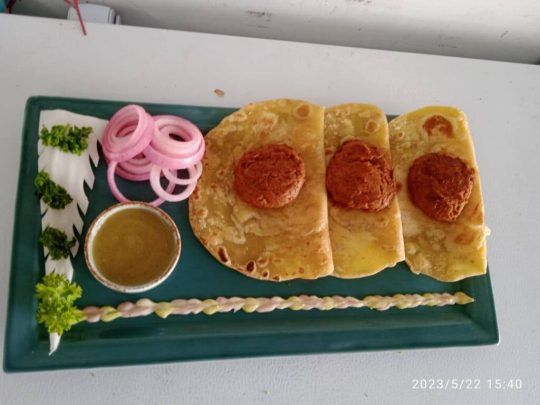
For vegetarians, Al Tamr offers an equally enticing selection of dishes. The Hummus Bil Tahina with Naan is a must-try. Smooth, creamy hummus made from fresh chickpeas, tahini, olive oil, and a hint of garlic is served with warm, fluffy naan bread. The fusion of Arabic hummus with Indian naan results in a dish that’s both comforting and exotic.
At Al Tamr, every dish is thoughtfully crafted and beautifully presented. The culinary team's passion for creating unique dishes is evident in the restaurant's innovative offerings that span from appetizers and mains to delightful desserts. Don't forget to save room for their signature dessert – Baklava with Indian Rabri. The sweet, flaky layers of baklava paired with the creamy, rich Indian rabri will surely make for a sweet finale to your meal.
Pair your meal with a selection from Al Tamr's extensive beverage list. You can choose from traditional Arabic drinks like mint tea and Arabic coffee, or opt for something with a local twist like their Masala Chai or Mango Lassi.
To experience the enticing flavors of Arabic fusion cuisine in an elegant setting, visit Al Tamr in Howrah. They have made the exotic accessible, creating a dining experience that is simultaneously unique, comforting, and unforgettable. Give them a call at +91 9123608838 to make your reservation.
Al Tamr's commitment to delivering a memorable dining experience is a testament to its status as the leading multi-cuisine restaurant in Howrah. This fusion food gem is not just a restaurant, but a destination where food lovers can embark on a flavorful journey that transcends geographical boundaries.
Whether you're a local food enthusiast or a traveler looking to try something different, Al Tamr in Howrah is the place to be for a truly international culinary experience. So, step into Al Tamr and be ready to savor the best of Arabic fusion cuisine right in the heart of Howrah.
Experience the culinary richness of Al Tamr, where tradition meets innovation and every dish is a fusion feast for the senses.
0 notes
Text
Price: [price_with_discount]
(as of [price_update_date] - Details)
[ad_1]
Explore the wide range of instant hummus mix from the house of Bakr Gourmet available on Amazon, This instant hummus mix is made of chickpea flour, salt, citric acid, cumin powder, and lemon powder. Our 3-in-1 hummus mix is the perfect solution to your hummus cravings. No need to spend hours soaking chickpeas, blending, and straining—with our mix, you can have a smooth and creamy batch of hummus ready in 15 minutes! And Best of all this includes a sachet of Tahina and Extra Virgin Olive Oil.
Diet Type: vegetarian
Ready in 15 minute, super smooth and creamy.
3IN1 Instant Hummus Mix possess a variety of best flavours. Because of its ingredients, Instant Hummus Mix is rich in minerals and vitamins.
Natural Vegan and No Added Preservatives.
[ad_2]
0 notes
Text
There is no better Hummus recipe than this one
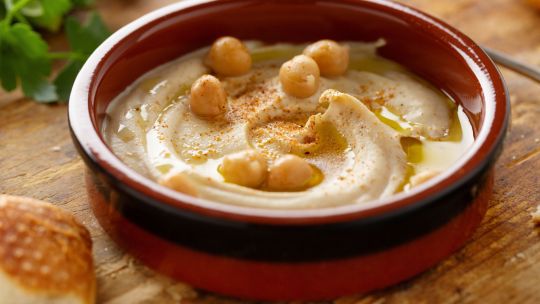
There is no doubt that this is a big promise. But it wasn't an easy road to the best hummus recipe ever. It took a lot of experimenting (a lot) for me to get it. Smoothest consistency, cleanest flavors. It's a joy to share it with you, as always. Give love a chance. Haha!
For homemade hummus, dried, soaked chickpeas are simmered. To ensure optimum smoothness, some recipes require you to peel each chickpea. That's amazing! According to Angtnonions, those time-consuming tasks are unnecessary.
Baking soda penetrates the skin better when stirred, which helps break down the skin. This trick speeds up the cooking process and makes the puree smoother. This recipe uses ice-cold water to loosen the hummus, unlike most hummus recipes that use a lot of oil. In addition to being delicious and smooth, it's also low in fat. Serve the hummus with olive oil drizzled on top. Take a bite with a piece of bread and enjoy.
Hummus recipe from Angtnonions
Ingredients:
3 kg — Miraya Chickpeas Paste
600gms -Tahina
200 gms — Oil sunflower
500 gms — Ice/chilled water
20gms — Salt
10gms — Lemon Salt
Here's how:
1. Add cold water to twice the volume of chickpeas in a large bowl. An overnight soak is recommended.
2. Drain the chickpeas the following day. A large pot should be placed over high heat. Baking soda and chickpeas should be added after the chickpeas have been drained. Stir continuously for about 3 minutes.
3. Boil the water with the salt. Skim any foam and skins that float to the surface as you cook. According to the type and freshness of the chickpeas, they will need to be cooked for 20 to 40 minutes. If you press them between your thumb and finger, the meat should break up easily, almost mushy but not quite.
3. Chickpeas should be drained. Make a stiff paste by placing them in the food processor. After adding the tahini paIt can be served straight away or refrigerated, but it should be taken out of the fridge at least 30 minutes before serving slowly and allowed to mix for about five minutes.
4. Let the hummus rest for at least 30 minutes after it's been transferred to a bowl and covered with plastic wrap. When serving, top with a slice of cheese or avocado. Serve straight away or refrigerate until needed. When serving, top with a slice of cheese or avocado. Serve straight away or refrigerate until needed. layer of good-quality olive oil. This hummus will keep in the refrigerator for up to 3 days.
we will also serve different products like
Black beans in Dubai
Makhani Gravy
Green Chili Paste
Red Chilli Paste
0 notes
Text
Sweetgreen Menu Prices
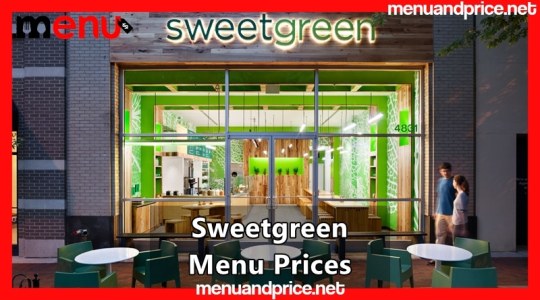
Sweetgreen Menu Prices are very curious. For this reason, we have prepared the updated Sweetgreen Menu Price list for you. By following our site, you can reach up-to-date menu prices such as Sweetgreen Menu Prices. The menu prices of the Sweetgreen brand, which has many branches, are frequently searched. You can follow our website menuandprice.net for menu prices research. We offer you the most up-to-date Sweetgreen menu prices.
You can find the menu prices of the brand you want to research on our website. You can also access the menu of the restaurant, cafe or fastfood store you want from the search field above. Here are the new Sweetgreen Menu prices.

sweetgreen prices
Sweetgreen Menu Prices
Sweetgreen is a fast food restaurant chain that specializes in salads made with fresh, organic produce that is locally sourced each season. Due to the higher quality of ingredients, Sweetgreen prices can be considered higher than average when compared to similar foods at other fast food restaurants.
In addition to offering many kinds of delicious and tasty salads, Sweetgreen also offers soups made with fresh, wholesome ingredients. The soups are sold in small and large sizes.
And finally, if you’re feeling a bit thirsty, they have several beverages that are made fresh daily and they look as good as they taste.
New Sweetgreen Menu Prices;
Salads
One Grain or Another$10.50Umami Grain Bowl$10.25Spring Chicken$11.25OMG Omega$13.25Kale Caesar$9.75Spicy Sabzi$9.25Guacamole Greens$10.75Hummus Tahina$11.50Rad Thai$12.00Earth Bowl$11.25Hello Portobello$9.00Strawberry & Feta$9.50Hollywood Bowl$11.25Create Your Own (Base Price)$7.00Sweetgreen Menu Prices
Soups
Organic Lentil Chickpea SoupSmall$3.50Organic Lentil Chickpea SoupLarge$5.50Sweetgreen Menu Prices
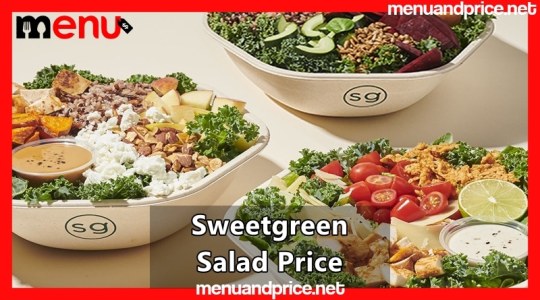
sweetgreen salad price
Beverages
Hibiscus Lime Fresca$2.50Chamomile Mint Iced Tea$2.50Jasmine Green Iced Tea$2.50Cucumber Ginger Limeade$2.50Lemon Fresca$2.50Sweetgreen Menu Prices
Our core values guide our actions and we aim to empower our customers, team members and partners to be a positive force on the food system. That’s why we’re building a transparent supply network, why we cook from scratch, and why we’re building a community of people who believe in the power of real food.
Sushi Ai Menu Prices
https://www.youtube.com/watch?v=KF-aaO4H_jA
Sub Zero Ice Cream Menu Prices
When we were in school, there were two choices: food that was slow, expensive, and fresh—or fast, cheap, and unhealthy. We saw an opportunity to create a business where quality was never sacrificed for convenience. On August 1st 2007, two months after graduating, we opened sweetgreen in Washington DC, and served our first customers with a vision to reimagine fast food.
Taco Casa Menu Prices
Why is Sweetgreen so expensive?Taparia: In the case of chains like Sweetgreen and Chopt, they are opening in very high-income neighborhoods. They have very high rent costs, they're very labor-intensive and they have high build-out costs. That's one of the big drivers behind their high price point.Is Sweetgreen good for weight loss?“Sweetgreen has some of the best choices for a healthy lunch or dinner, hands-down,” say Lisa Muras, RD, and Nadine Jakim Young, MS, RD, CDE of Virginia Hospital Center. “Most salads total between 400 and 500 calories, an affordable calorie allotment for the majority of people.Can you pay with cash at Sweetgreen?Review of sweetgreen. Description: Fresh salads, plates + grain bowls available for pickup and delivery every day, made in-house from scratch, using whole produce delivered that morning.
Read the full article
#sweetgreenharvestbowlprice#SweetgreenMenuPrices2022#SweetgreenMenuPrices2023#sweetgreenprices#sweetgreenprices2022#sweetgreenprices2023#sweetgreensaladcost#sweetgreensaladprice#sweetgreensallergenmenu#sweetgreensprices
0 notes
Text
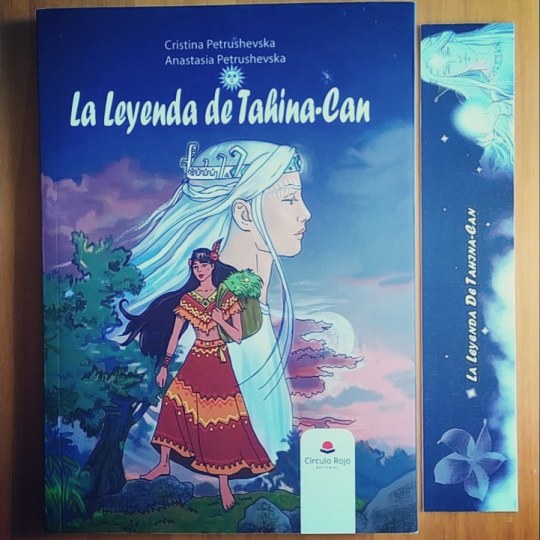



Here are some illustrations of my book The legend of Tahina-Can. 🤩✨
#cute art#art#advertising#adventure#brazil#books#novela#novel#news#nice#food#fashion#forest#jungle#english#spanish#starlight express#humanity#kindness#amazon#amazon books#amazing
3 notes
·
View notes
Text

[ID: A greyish brown stew presented alongside flatbread, red pepper paste, green peppers, and carrot sticks. End ID]
سماقية / Summagiyya (Gazan stew with chard, chickpea, sumac, and 'lamb')
Summagiyya (سُمَّاقِيَّة; also translitered "sumagiyya", "sumaghiyyeh" or "sumaqiyya") is one of the signature dishes of the Gaza strip, in particular Gaza City. It consists of lamb, chard, and chickpeas in a sumac-infused broth; savor and zest is added by a dagga of dill seeds, garlic, and peppers, and nutty depth by a generous drizzle of red tahina. The resulting stew is thick, earthy, and slodgily grey (due to the green chard and red sumac)—it also has the characteristic sourness of much Gazan cuisine.
Summagiyya is most often prepared during holidays, especially Eid al-Fitr; it's an excellent make-ahead dish for these occasions, since it's even better once its flavors have had time to meld and mellow overnight. It is served cold alongside fresh vegetables, and eaten by using flatbread to scoop up each bite. This recipe provides a spiced seitan recipe to replace the lamb, but you may also use any lamb or beef substitute of your choice.
Today, summagiyya is often prepared with Israeli white tahina, as decades of punitive import laws, taxes, and restrictions have enforced Palestine's status as a consumer, rather than an producer, of food products. Israeli tariffs on, and confiscations of, Palestinian goods have forced those tahina factories that survived to import sesame seeds rather than using locally grown crops, even as they export the best of their product to Israel. The dubbing of foods such as tahina and hummus as culturally "Israeli" cuisine works to hide this exploitative relationship, and cement an Israeli national identity through the subsuming and erasure of Palestinian existence. It is for this reason that Emad Moussa writes that Palestinian cuisine has a role in "protecting against a people's very extinction."
Medical Aid for Palestinians (MAP) has put out an urgent call for donations to provide medical supplies to Palestinian hospitals when supply lines reopen. Also contact your representatives in the USA, UK, and Canada.
Ingredients:
For the soup:
500g (2 large bunches) chard (شلق), diced
80g Levantine sumac berries (Rhus coriaria)
1/2 cup soaked and boiled chickpeas, mostly cooked (40g dry / scant 1/4 cup)
1/4 cup red tahina
1/2 cup (60g) all-purpose flour
1 large yellow onion
1/4 cup olive oil
1 tsp kosher salt
2 cardamom pods (optional)
2 allspice berries (optional)
More olive oil, to fry
Sumac berries can be found in the spice section of a halal grocery store. If you're unable to locate whole berries, pre-ground will do.
For the dagga:
1 1/2 Tbsp dill seeds
5 cloves garlic
1/2 green cubanelle pepper
2-3 dried red chilis (optional)
1/2 tsp black pepper
1/4 tsp cumin
Dill seeds may be found at a halal, south Asian, or speciality European grocery store. They are commonly used in Indian food and as a pickling spice. At a south Asian grocery store they may be labelled soyo, suva, shepu, or savaa.
For the lamb:
1 cup (120g) vital wheat gluten, aka gluten flour
1/2 Tbsp ground sumac
1/2 tsp ground caraway
1 tsp onion powder
1 tsp Palestinian 7-spice
1/2 tsp garlic powder
1/2 tsp sea salt
1/2 tsp ground black pepper
1/2 tsp ground cumin
1/2 tsp ground aniseed
1/2 tsp turnermic
1 tbsp olive oil
1/2 tsp soy sauce
1 tsp miso paste
2 cloves garlic, grated
2 tsp pomegranate molasses
1 Tbsp white or red tahina
About 1/2 cup vegetarian 'beef' stock from concentrate, or vegetable stock
Pomegranate molasses is simply pomegranate juice that has been reduced to a thick consistency. It may be found in the sauces section of a halal grocery store.
Instructions:
For the soup:
1. Soak dried chickpeas in cool water overnight, or in just-boiled water for an hour. Drain and re-cover with water, and boil for 30-45 minutes, until almost fully cooked. Drain and set aside.
2. Simmer sumac seeds in enough water to cover by a couple inches for about an hour, until the water is dark red. Blend the seeds and water together, then strain the mixture through a cheesecloth.
If you're using ground sumac, skip the blending step. Use a cheesecloth or very fine metal sieve (such as one intended for brewing tea) to remove the ground spice from the water.
3. Whisk the flour into the sumac-infused water.
For the lamb:
1. Combine all dry ingredients in a large mixing bowl. Add wet ingredients other than stock and stir briefly. Add enough stock to produce a soft, smooth dough.
2. Knead by hand on a clean surface, or put in a stand mixer with paddle attachment on medium-low, for about 5 minutes. You should see stringy strands begin to form in the dough.
3. Allow to rest, covered, for 5-10 minutes to encourage gluten formation. Knead for another 3 minutes. Do not over-knead.
4. Tear the dough into bite-sized pieces.
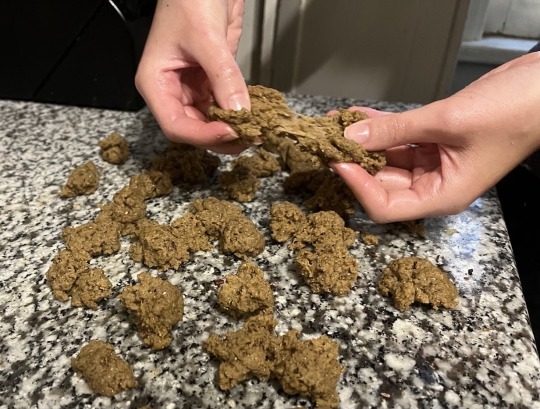
Stringy seitan being pulled apart into pieces.
You may also shape the dough into a slab and cube it with a sharp knife—the lamb or beef used in summagiyya is usually cubed—but I prefer the texture of torn seitan to sliced.
5. Steam the seitan pieces for 10 minutes in a bamboo steamer or using a metal steamer basket. Place the bamboo steamer in the bottom of a wok and cover its base by about 1/2" (1 cm), then raise the heat to boil the water; lower the heat to keep the water at a simmer. If using a steamer basket, place it over the opening of a pot containing a couple inches of water and bring it to a simmer. Start the timer when the water begins simmering.
6. Heat olive oil on medium-high and sear the steamed seitan pieces, turning as necessary, until deeply browned on all sides. Set aside.

Fried seitan pieces.
You can save a step here by searing the raw seitan, then returning it to the pot after you've fried the onions to simmer it rather than steaming. I found that this produced a mushier texture.
For the dagga (دقة):
1. Grind cumin and black pepper thoroughly in a mortar and pestle, then add dried red pepper and dill seed and crush coarsely. Add green sweet pepper and garlic and pound until a coarse mixture forms.
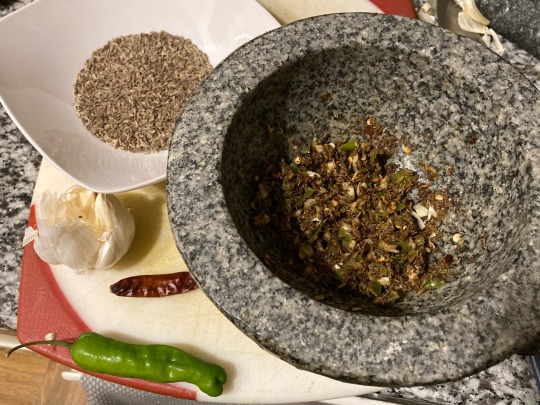
Dill seeds, green sweet pepper, garlic, and dried red chili on a cutting board, alongside dagga in a large granite mortar.
You may also use a spice mill or food processor.
To assemble:
1. Chop the onion. Wash the chard and slice it thinly in one direction; turn it ninety degrees and slice thinly again.
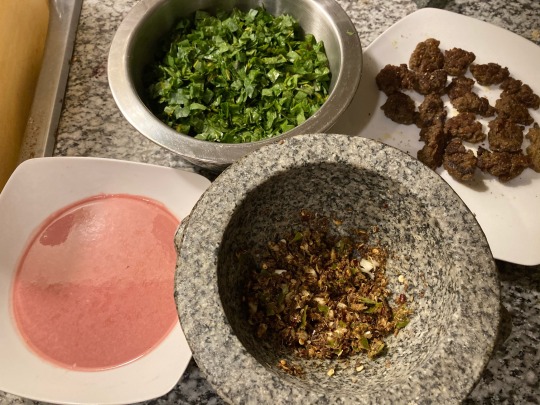
Diced chard, fried seitan, dagga, and sumac-infused water with flour.
2. In a large pot, heat a couple tablespoons of olive oil on medium. Fry chopped onion, cardamom pods, and allspice berries for a minute until fragrant. Add half of the dagga and fry until fragrant.
3. Add chard and fry, mixing often, until wilted.
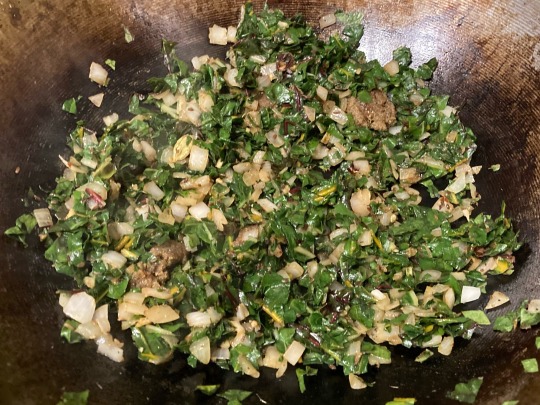
Wilted chard in a wok.
4. Add sumac mixture, chickpeas, and water to cover. Bring to a boil, then lower heat to a simmer. If you didn't steam your seitan earlier, add it now.
5. Continue to stir and simmer until the stew is thick, homogenous, and greyish-brown, about 15 minutes.

Simmered stew.
6. Add the remainder of the garlic mixture, the red tahina, a pinch of ground cumin, the 1/4 cup olive oil, and salt to taste. Return the steamed and seared seitan to the pot and mix.
Serve cool with flatbread, sweet green peppers, bitter green and black olives, carrots, leafy greens, and/or pickles.
#vegetarian recipes#vegan recipe#vegan cooking#Palestinian#Gazan#chickpeas#lamb#seitan#chard#dill seeds#pomegranate molasses
478 notes
·
View notes
Text
For those who live in the U.S.:
regardless of where you live, please tell me about your tahina-purchasing experiences in the notes
31 notes
·
View notes
Text

Let the HUMMUS be with you
Hummus is a Middle Eastern dip, spread, or savory dish made from cooked, mashed chickpeas blended with tahini, lemon juice, and garlic. The standard garnish in the Middle East includes olive oil, a few whole chickpeas, parsley, and paprika. In Middle Eastern cuisine, it is usually eaten as a dip, with pita bread.
Taste
Hummus is a rich, creamy paste that's full of umami flavor. Garlicky, tangy and savory, hummus has a smooth texture that pairs easily with crispy pita and fresh veggies. Its distinct flavor can't easily be compared to other dishes, so experience the goodness of hummus for yourself!
Is hummus good to eat everyday?
Hummus is a truly nutritious snack that is good to include in your daily diet in moderation and when combined with a diverse range of food. Hummus can be a part of the daily diet if consumed in moderation, and the rest of the diet contains a diverse range of foods.
Is hummus good for skin ?
Hummus is packed with things your skin loves
They are an excellent source of manganese, which combats free radicals, and molybdenum, which helps detoxify skin by removing sulphites. Other nutrients such as folate and vitamin B nourish skin cells and repair damage from the sun and harmful toxins.
History
Although multiple different theories and claims of origins exist in various parts of the Middle East, evidence is insufficient to determine the precise location or time of the invention of hummus.Its basic ingredients—chickpeas, sesame, lemon, and garlic—have been combined and eaten in Egypt and the Levant over centuries.Though regional populations widely ate chickpeas, and often cooked them in stews and other hot dishes,puréed chickpeas eaten cold with tahini do not appear in records before the Abbasid period in Egypt and the Levant.The earliest known written recipes for a dish resembling hummus bi tahina are recorded in cookbooks written in Cairo in the 13th century. A cold purée of chickpeas with vinegar and pickled lemons with herbs, spices, and oil, but no tahini or garlic, appears in the Kanz al-Fawa'id fi Tanwi' al-Mawa'id;and a purée of chickpeas and tahini called hummus kasa appears in the Kitab Wasf al-Atima al-Mutada: it is based on puréed chickpeas and tahini, and acidulated with vinegar (though not lemon), but it also contains many spices, herbs, and nuts, and no garlic. It is also served by rolling it out and letting it sit overnight,which presumably gives it a very different texture from hummus bi tahina.
0 notes
Text

Hello there! My name is Kristina Petrushevski, I am a Ukrainian author and now moved to Spain. Me and my sister Ana wrote this novel last year and now we started to publish it on Popink and Kypsel. I will be very grateful if you support us here:
https://api.popinkapp.com/html/book/detail?id=HR0Jmr4Z8REiUbIAS3MXjw==
https://kypsel.com/books/the-legend-of-tahina-can-chapter-1-star-light
#art#artwork#books & libraries#comic book art#new books#adventure#galaxy of adventures#magic#fantasy#fantasy books#wildlife#shamans#shaman girl#shamanart#starlight#star lord#galaxy#artist#artistic#artists on tumblr#writers on tumblr#writers block#writerslife
8 notes
·
View notes
Text
@fidel-guevara replied to your post “i made hummus from scratch and it’s the best thing ever”
������������
sometimes i try :D :D :D
#fidel guevara#next thing i'll do now that i can make tahina will be babaganoush GIVE ME ALL THE AUBERGINES
1 note
·
View note
Text
Here's what Karachi's most well-known food critique Mujeeb Ansari said about us and we'll take it:
We might spend allot of time and effort at times to find the best restaurant, or let’s stay a set of the best restaurants in Karachi, while for a foodie like me, who has had, the best food in Karachi; the best Chinese in Karachi, the best pizza in Karachi, the best steak in Karachi from the best steakhouse in Karachi, the best Turkish food in Karachi, Best Irani food in Karachi, Best Lebanese food in Karachi, Best Arabic food in Karachi, or let’s call it, Best Arabic Cuisine in Karachi, near me, like, authentic shawarma in Karachi, best lamb shank in Karachi, best beef Mandi in Karachi, best Chicken Mandi in Karachi, Best mutton Mandi in Karachi, Best Madhbi in Karachi, Best Madfoon in Karachi, best Makboos in Karachi; in short, best Arabic rice in Karachi or Best Arabic Mandi in Karachi, to be even more specific; the Best Kuwaiti food in Karachi, the best Saudi Food in Karachi,
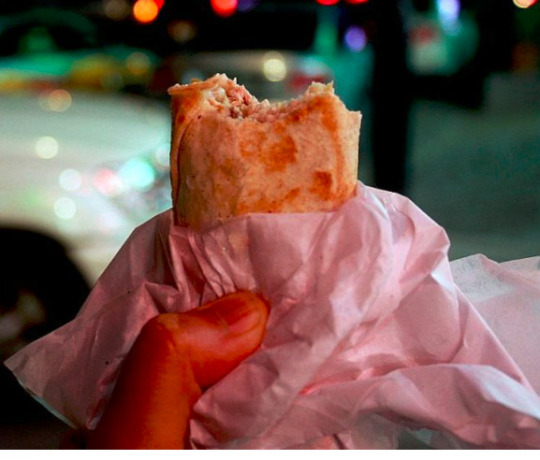
Best restaurant near me, best restaurant in Karachi, best dine in in Karachi. You can imagine my stride and strive to all the restaurants to Kabsa House or Mandi House of House of Mandi as they call it; from Ridan or Ridan House of Mandi to Zeytin, to Yemen Bait Al Mandi or Yemeni Mandi, Bait Al Kabsa Mandi and Bukhari, you must trust me when I say this; I have done everything to find the best Hummus in Karachi, the best Kabsa in Karachi, something with Tahina and Basbousa or Kunafa, the best Ruz Bukhari or as they call it Shawaya Ruz bukhari in Karachi, and it is tough to believe that the answer to my longing was not finding the best Arabic food in Karachi.
I was supposed to look for the best Yemeni food in Karachi, or a Yemeni Mandi in Karachi.
The stride literally ended when I dinned at Kabsa Express, probably the only best Yemeni Restaurant or Yemenite Cuisine as they call it, in Karachi. Do you know what they call it? They call it Kabsa Madhghout, the King of all Kabsas.
For someone who came back from the Gulf. All I am left to do is to find Albaik in Karachi and we never need to leave Pakistan again.
Reference
restaurants in karachi
mandi
ridan mandi
best restaurant in karachi
best restaurants in karachi
ridan house of mandi
mandi house karachi
basbousa
ridan
ridan mandi menu
bahadurabad restaurants
Kabsa
mandi house menu
mandi karachi
mandi in karachi
chicken mandi
karachi food menu
arabic mandi
arabian mandi
mandi dish
ridan hyderabad
house of mandi
mandi restaurant
mandi pk
karachi food number
karachi house
mutton mandi
ridan mandi clifton
ridan house of mandi menu
Albaik in Karachi
Arabic food in Karachi
Arabic Mandi in Karachi
Best Arabic cuisine in Karachi
Best Dine in in Karachi
Best food in Karachi
Best Restaurant in Karachi
Best Restaurant near me
Restaurant near me
Zeytin
Best Hummus in Karachi
Best Irani food in Karachi
Best Kabsa in Karachi
Best Kuwaiti food in Karachi
Best Lamb Shank in Karachi
Best Lebanese Restaurant in Karachi
Best Madhbi in Karachi
Best Madhfoon in Karachi
Best Mutton Mandi in Karachi
Best Pizza in Karachi
Shawaya
Arabic rice
Bait AL kabsa Mandi and bukhari
Best Authentic Shawarma in Karachi
Best Beef Mandi in Karachi
Best Chicken Mandi in Karachi
Best Chinese in Karachi
Best Ruz Bukhari in Karachi
Best Saudi food in Karachi
Best Steak in Karachi
Best Steakhouse in Karachi
Best Turkish food in Karachi
Best Yemeni Food in Karachi
Best Yemeni Mandi in Karachi
Best Yemeni Restaurant in Karachi
Foodie
Kabsa express
Kabsa house
Madghout
Makbous
Tahina
Yemen bait AL mandi
Yemen mandi
1 note
·
View note